Postdocs
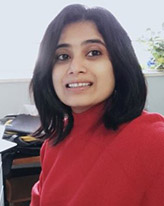
Anche, RamyaPostdoctoral Research AssociatePh.D, 2020, Indian Institute of AstrophysicsAreas of Interest: Polarization modelling, Optical Polarimetry, Optical design and analysis, Adaptive optics and High contrast ImagingRamya completed her PhD from the Indian Institute of Astrophysics, Bangalore, India in Jan 2020. She worked on developing a polarization model for the Thirty Meter Telescope (TMT). She also developed and verified the polarization model for the largest solar telescope (MAST) in India. She worked as a research engineer in NAOC, Beijing and as a post-doc in IUCAA, India after her PhD. As a part of the PASIPHAE collaboration, she worked with Wide-Area Linear Optical Polarimeter (WALOP) instrument while she was in IUCAA. She has a keen interest in astronomy outreach and science communication activities and designing citizen science astronomy projects. |
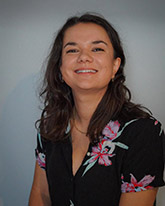
Beasor, EmmaPostdoctoral Research Associate I, Bart J. Bok Postdoctoral FellowPhD, Astrophysics, 2019, Liverpool John Moores UniversityEmma will be joining Steward Observatory as the Bok Fellow in Fall 2022. She received her PhD from Liverpool John Moores University in 2019 under the supervision of Dr. Ben Davies. Following this, she was awarded a NASA Hubble Fellowship for which she was based over the road at NSF’s NOIRLab. Her research focuses on the evolution of cool supergiant stars, with the aim of constraining the progenitor-supernova-remnant connection. While at Steward, Emma will continue to build upon her work using both observations and stellar evolution models, aiming to conclusively determine which stars explode as supernovae, what these explosions look like, and which fail to explode entirely. |
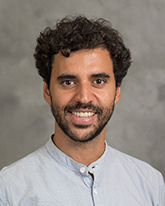
Beraldo e Silva, LeandroResearch Associate IPh.D, Physics, University of Sao Paulohttps://lberaldoesilva.github.io/Leandro is an expert on galactic dynamics and has worked on several topics in the interface between theoretical modelling, N-body simulations, and observational data. Specific projects he has worked on include different relaxation processes driving collisionless systems to stationary states, the role of massive clumps in the early evolution of disk galaxies, the Milky Way’s merger history, galactic seismology, and frequency analysis of orbits in galactic potentials with a focus on bar resonances. He is currently a co-chair of the DESI Milky Way Survey. Leandro’s current main interests are on the Milky Way's dark matter halo shape, the role of resonances in shaping stellar populations in the Galaxy, the merger history of Andromeda, and on advancing theoretical tools for dynamical analyses. |
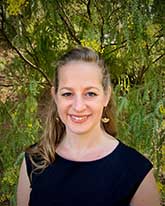
Bostroem, AzaleePostdoctoral Research Associate I, LSSTC Catalyst FellowPh.D., Physics, 2021, University of California, Davishttps://abostroem.wixsite.com/homeAzalee Bostroem is an LSSTC Catalyst Fellow at University of Arizona where she works on connecting massive star supernovae to their progenitor systems using multi wavelength observations. Azalee completed a Masters in astronomy from San Diego State University before working as a research and instrument analyst at the Space Telescope Science Institute. From there she earned her PhD from UC Davis and was a DiRAC Postdoctoral Fellow at University of Washington. In addition to understanding exploding stars, she is a strong proponent of open source development, tools, and open science. She is an active member of the Carpentries Community and lead the development of the Foundations of Astronomical Data Science Data Carpentry Curriculum. She believes science is better when we help each other succeed and passionately promotes education and equity. |
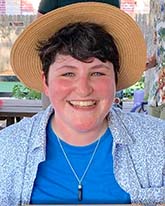
Champagne, JaclynPostdoctoral Research Associate I, JASPER ScholarPh.D., 2022, University of Texas at Austinhttp://jackiechampagne.com Areas of Interest: High-redshift quasars, galaxy protoclusters, galaxy formation and evolution in dense environmentsJackie joins Steward in September 2022 as a JWST Arizona/Steward Postdoc in Early galaxies and Reionization (JASPER) Scholar working with Xiaohui Fan. Her multiwavelength research in galaxy cluster environments spans a wide range of redshifts, from epoch of reionization to the cosmic noon, in order to build a cosmological timeline of large scale structure formation. As a JASPER scholar, she is using JWST imaging and spectroscopy of reionization-era quasar fields to investigate the properties of quasar host galaxies and their surrounding companions, searching for confirmation of early protocluster structures associated with the hosts of the most massive SMBHs at z>6.5. Jackie received her PhD in 2022 from the University of Texas at Austin. |
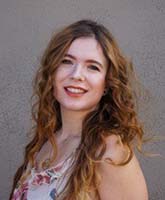
Fielder, CatherinePostdoctoral Research AssociatePh.D., Physics, 2022, University of Pittsburghhttp://cfielder.github.io Areas of Interest: Galaxy Formation and Evolution, galaxy environments, the Milky Way, Dwarf Galaxies, machine learning techniquesMy research lays at the intersection of interpreting theoretical models and improving observational constraints to understand galaxy evolution. I completed my PhD at the University of Pittsburgh, where I worked on leveraging the uniqueness of the Milky Way in order to fill in our gaps of how the Milky Way relates to other galaxies photometrically, and how we should extrapolate from the Milky Way to guide simulations. At Steward I will be studying both individual dwarf galaxies in the local Universe and dwarf galaxy ensembles. Understanding these systems provides a unique window into the roles galaxy environment and internal processes play in galaxy evolution. |
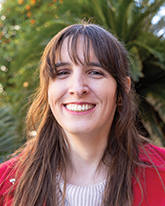
Fisher, TheresaPostdoctoral Research AssociatePh.D, 2023, Arizona State Universityhttp://www.tessafisher.com/Tessa joined the Steward Observatory in August 2023, working with Dr. Régis Ferrierre as part of the NASA-funded Alien Earths NExSS team. Her research is primarily focused on using global ecology and complex systems science to develop potential biosignatures for large populations of exoplanets, a natural evolution from the work she pursued for her PhD thesis at ASU on atmospheric chemical reaction network topology as a biosignature. Her goal is to use these new theoretical approaches to help guide future exoplanet observations in the search for life beyond Earth. |
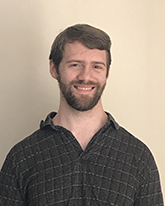
Florian, MichaelPostdoctoral Research Associate IPh.D. Astronomy and Astrophysics, 2017, University of ChicagoMichael joined Steward Observatory in November 2020 to work with Professors George and Marcia Rieke. Michael's research focuses on the formation and evolution of galaxies, including the interstellar medium conditions and morphological characteristics of high-redshift galaxies. Previously, he studied small-scale substructures inside galaxies at z~2 revealed by the combination of gravitational lensing and the Hubble Space Telescope. As a member of Steward Observatory, he is preparing to study high-redshift galaxies with the James Webb Space Telescope as part of the JADES team. |

Georgiev, Boris |

Hardegree-Ullman, KevinPostdoctoral Research AssociatePh.D. , 2018, University of Toledohttp://kevinkhu.com/Kevin's research spans many facets of exoplanet science, which began when he was an undergrad at the University of Arizona conducting follow-up observations of hot Jupiters with the Kupier 61" Telescope. After the U of A, Kevin went on to study brown dwarf variability and constrain M dwarf planet occurrence rates for his PhD at the University of Toledo. He was a visiting graduate fellow and later postdoc at Caltech/IPAC-NExScI, following up K2 exoplanet discoveries with Spitzer and working to constrain planet occurrence rates with K2 data. Kevin collects and uses archival data from several ground and space-based observatories to characterize stars and their unique planets. He is currently assessing the capabilities of upcoming extremely large telescopes and their potential to detect biosignatures. |
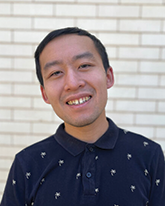
Hom, JustinPostdoctoral Research AssociatePh.D, 2023, Arizona State UniversityAreas of Interest: Circumstellar disks, high contrast imaging, ExoplanetsJustin joined Steward in August 2023 after completing his PhD upstate at the School of Earth and Space Exploration at Arizona State University. Justin’s science research focuses on the high contrast imaging of circumstellar debris disks, exoplanets, and brown dwarfs, having conducted observing programs with the Gemini Planet Imager (GPI), NIRC2 at Keck Observatory, and LMIRCam at LBT. He joins the University of Arizona Space Astrophysics Lab (UASAL) to work on disk modeling analysis for the Nancy Grace Roman Space Telescope Coronagraphic Instrument and Habitable Worlds Observatory. He will also be involved in commissioning and initial science programs for the MMT AO exoPlanet characterization System (MAPS) and the System for coronagraphy with High order Adaptive optics from R to K band (SHARK) on LBT. Justin is also highly passionate about teaching and education research and development, designing active learning curricula for astronomy students. |
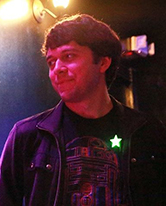
Hosseinzadeh, GriffinPostdoctoral Research AssociatePh.D. , 2018, University of California, Santa Barbarahttp://griffin-h.github.io/ Areas of Interest: supernovae and other transients, electromagnetic follow-up of gravitational waves, machine learning and statistical methodsGriffin joined Steward Observatory in fall of 2021 to work with Prof. Dave Sand. His research attempts to link the zoo of explosions we observe in the night sky to the stars that produce them, in order to understand the last years to months of a star's life. He is also interested in what we can learn from optical observations of gravitational wave sources. He previously worked at the Center for Astrophysics | Harvard & Smithsonian, after graduating from the UC Santa Barbara with a Ph.D. in astrophysics in 2018. |

Isbell, JacobPh.D, 2022, University of HeidelbergAreas of Interest: Active Galactic Nuclei, optical/NIR interferometry, black hole/host connection, Galaxy EvolutionJacob joined Steward Observatory in Jan 2024 to work with Dr. Steve Ertel to develop and support LBT Inteferometric observations. Jacob's research focuses on active galactic nuclei (AGN) and their dynamics at the (sub-)parsec scale, aiming to understand the interface and co-evolution of the AGN and its host galaxy. He uses dust emission to trace the in- and outflowing gas which feeds the AGN or impacts the host. He completed his bachelors at the University of Iowa, and he received his PhD in 2022 from the University of Heidelberg for his work with the Max Planck Institute for Astronomy to study nearby AGN and image them at subparsec scales with the VLTI/MATISSE instrument. |
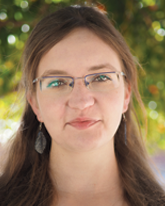
Itrich, DominikaPostdoctoral Research AssociatePh.D, 2023, European Southern Observatory & Ludwig Maximilian University of MunichDominika Itrich investigates young, low-mass stars using infrared and optical spectroscopy. In particular, she is interested in how environmental conditions, like irradiation field or metallicity, impact early evolution of stars and their protoplanetary disks. Dominika received her PhD in 2023 from the Ludwig Maximilian University of Munich and the European Southern Observatory. In 2024, she joined Alien Earths team at the University of Arizona. |

Ji, ZhiyuanPostdoctoral Research Associate I, JASPER ScholarPh.D., 2023, University of Massachusetts AmherstAreas of Interest: Structural transformations and galaxy quenching at high redshifts, cosmic reionization, AGN hosting galaxiesZhiyuan joined Steward in November 2022 as a JWST Arizona/Steward Postdoc in Early galaxies and Reionization (JASPER) scholar working with the JWST NIRCam and MIRI GTO teams. Zhiyuan's primary research interests include the physics of the apparently profound transformations of galaxy structural and ISM properties that take place during the quenching of star formation, as well as the Epoch of Reionization. As a JASPER scholar, Zhiyuan is using deep imaging data taken by the JWST/NIRCam and MIRI to investigate the formation and evolution of galaxies across cosmic time. Zhiyuan received his PhD in 2023 from the University of Massachusetts Amherst. |
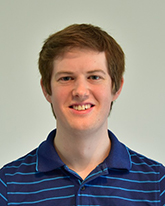
Jones, MichaelPostdoctoral Research AssociatePh.D., 2016, Cornell UniversityAreas of Interest: Galaxy Formation and Evolution, galaxy environment, Dwarf Galaxies, Radio AstronomyMichael joined Steward Observatory in 2020 to work with Prof. David Sand. His research focuses on low-mass galaxies in the local Universe, using space and ground-based optical and radio telescope observations to trace stars, star formation, and the gas the fuels it. He led the discovery of the Pavo dwarf galaxy as part of a wider search for extremely low mass galaxies. He revealed the existence of a novel class of isolated star-forming clouds in the Virgo galaxy cluster, known as "blue blobs". He also works on the star formation and quenching of low-mass satellite galaxies in Milky Way-like systems, and testing formation scenarios for ultra-diffuse galaxies. Michael completed his PhD working on the ALFALFA survey at Cornell University and was previously a post-doctoral fellow at the Instituto de Astrofíscia de Andalucía in Granada, Spain. |
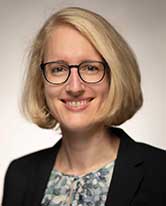
Keppler, MiriamPostdoctoral Research Associate IPh.D. , 2020, University of Heidelberghttps://kepplerm.github.io/ Areas of Interest: Multiwavelength Spectroscopy, Exoplanets & Planet Formation, Astronomical Software & Pipeline developmentMiriam joined Steward Observatory in 2022 to become part of the Hamden UV lab. There, she leads the development of a data reduction and analysis pipeline for the Aspera SmallSat Mission. Miriam’s research interests include multi-wavelength spectroscopic observations from the UV to the sub-millimeter in connection to protoplanetary disks and planet formation, as well as the characterization of the terrestrial UV background. She received her PhD from the University of Heidelberg in 2020, where she worked on the detection and characterization of newly formed exoplanets with VLT/SPHERE and ALMA. |
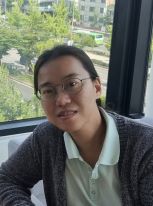
Kim, Jin-AhPostdoctoral Research AssociatePhD, 2023, University of MinnesotaAreas of Interest: Gas and dust in galaxies, Evolution of GalaxiesJin-Ah joined Steward Observatory in July 2023 as a postdoctoral research associate in the UV group. She is working on analyzing UV spectroscopy from archival FUSE data to study the properties of circumgalactic medium surrounding nearby galaxies. She earned her PhD in 2023 from the University of Minnesota. During her PhD, she studied magnetic fields in galaxies using FIR polarimetry by analyzing SOFIA/HAWC+ polarimetric images. |
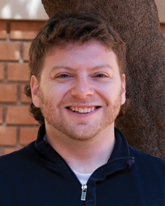
Kirshner, MitchellPostdoctoral Research AssociatePh.D, Systems and Industrial Engineering, 2023, University of ArizonaAreas of Interest: Model-Based Systems Engineering (MBSE), space telescope constellation optimization, atmospheric radiative transfer modeling, STK, digital engineeringMitchell finished his PhD May 2023 in Systems & Industrial Engineering at the University of Arizona, a few buildings West on campus. His specialty is in Model-Based Systems Engineering (MBSE), a field which uses semantic interoperability and visual programming languages to from cross-cutting diagrams as an alternative to document-based engineering of complex system-of-systems. Mitchell works under auspices of Dr. Eric Pearce, applying MBSE to advance space telescope constellation optimization through requirements-based trade studies. Prior to his enrollment at UA, he worked at submarine manufacturer General Dynamics Electric Boat and attended Northwestern University for his BS and MS. He is originally from Long Island, New York. |
Kobayashi, YosukePostdoctoral Research AssociatePh.D. , 2021, University of TokyoAreas of Interest: Cosmology and Large-Scale StructuresYosuke's research interests involve large-scale structures of the Universe and its cosmological information. He is also interested in machine learning-based methods to apply analysis of cosmological survey data. During his Ph.D. courses, he developed a simulation-based model of galaxy power spectrum observable in spectroscopic surveys, using a machine learning technique, and applied it to the cosmological parameter inference on the SDSS galaxy survey data. As a postdoc here at Steward Observatory, he has joined the collaboration of the SPHEREx survey and would like to further investigate the cosmological information in the large-scale structure. |
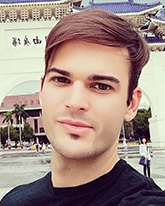
Krapp, Leonardo51 Pegasi b FellowPh.D., Astrophysics, 2019, University of Copenhagen DenmarkAreas of Interest: Plasma physics in the framework of non-ideal Magnetohydrodynamics and multi-species dynamicsLeonardo is currently a PhD student working in the Theoretical Astrophysics Group, at the Niels Bohr International Academy, Niels Bohr Institute, University of Copenhagen, Denmark. He joined Steward Observatory in fall 2019 as a Postdoctoral Research Associate to work with Professors Kaitlin Kratter and Andrew Youdin. Leonardo obtained his degree in Astronomy in 2015 at Universidad Nacional de Córdoba, Córdoba, Argentina. His research is focused on numerical Astrophysics applied to planet formation and protoplanetary disk dynamics. His interests include plasma physics in the framework of non-ideal Magnetohydrodynamics and multi-species dynamics accounting for the momentum transfer between multiple species, in particular, the aerodynamics coupling between gaseous fluids and dust grains. |
Krolikowski, DanielPostdoctoral Research Associate IPh.D., Astronomy, 2022, The University of Texas at Austinhttps://dkrolikowski.github.io Areas of Interest: Young stars and exoplanets, stellar activity, Star and Planet Formation, precision radial velocity methods, Astronomical SoftwareDanny joined Steward Observatory in September 2022 to work with Dr. Chad Bender and the teams for the NEID and HPF precision radial velocity spectrometers. His work focuses on the NEID data reduction and analysis software, and his research interests include young planetary systems and stellar magnetic activity. He completed a Ph.D. at the University of Texas at Austin in 2022 where he worked on a variety of topics including star formation, stellar spectroscopy, and using precision radial velocity measurements to search for young planets and understand stellar activity. Danny is interested in combining data across wavelength to understand stellar activity noise and characterize young planets across time to map their formation and evolution pathways. |

Lawther, DanielPostdoctoral Research Associate IPh.D, 2019, University of Copenhagen, DenmarkDaniel joined Steward Observatory in November 2020 to work with Profs. Xiaohui Fan and Marianne Vestergaard. The overall theme of his research is to understand accretion in Active Galactic Nuclei - the accretion flow, the AGN life cycle, and the geometry and dynamics of the central engine. He is currently working with extreme-variability 'changing look' AGN, studying their spectral energy distributions and variability behavior in their high-luminosity and low-luminosity states. |
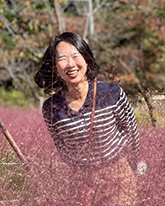
Lee, JinheeKASI-Arizona FellowPh.D., 2019, University of GeorgiaAreas of Interest: Young nearby stars, moving groups / stellar associations, ExoplanetsJinhee’s research interest includes low-mass stars and exoplanets. She has focused on characterizing young nearby stars, mainly moving group members. She made the BAMG (Bayesian Analysis of Moving Groups) tool for calculating the membership probability of moving groups. She is now focusing on characterizing exoplanets using high-resolution spectra. |
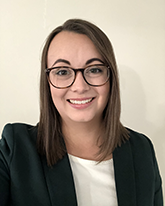
Levy, RebeccaNSF Astronomy & Astrophysics Postdoctoral FellowPh.D. , 2021, University of Marylandhttps://rclevy.github.io/ Areas of Interest: nearby galaxies, Gas Kinematics, Stellar Feedback, Multiwavelength Spectroscopic ObservationsRebecca joined Steward Observatory in October 2021 as a NSF Fellow. Her research focuses on using multiwavelength tracers of gas in galaxies to probe the effects of stellar feedback. At Steward, she'll focus on two prototypical starburst galaxies, NGC253 and M82, both of which harbor a population of "super" star clusters at their centers and are launching massive multiphase outflows. She's studying the gas and dust in the clusters and outflows using a combination of ALMA, SOFIA, JWST, and other spectroscopic data. She's also interested in kinematic measurements of extraplanar diffuse ionized gas in nearby galaxies, particularly in the EDGE-CALIFA Survey. |
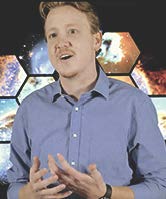
Linden, SeanPeter A. Strittmatter Fellow, Postdoctural Research AssociatePhD, 2020, University of VirginiaSean received his PhD in 2020 from the University of Virginia working with Dr. Aaron Evans and Dr. Eric Murphy at the NRAO. He was most recently a postdoctoral researcher at the University of Massachusetts Amherst working with Dr. Daniela Calzetti on identifying and characterizing embedded star clusters in nearby galaxies with JWST. Sean's primary research interest is studying star clusters and HII regions, their corresponding molecular gas structures, and the subsequent stellar feedback processes which affect the surrounding ISM. To accomplish this, he utilizes observations of obscured (radio/submm and near-infrared) and unobscured (UV/optical) star-forming regions in both normal and luminous infrared galaxies in the local Universe. Ultimately, the goal is to establish the importance these extreme star-forming environments have on the formation and evolution of massive stellar clusters throughout cosmic time. When Sean is not doing science, he can often be found playing volleyball or hiking around Tucson with his dog. |
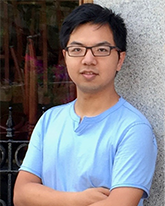
Liu, WeizhePostdoctoral Research Associate, JASPER ScholarPh.D. , 2022, University of MarylandAreas of Interest: High-redshift quasars, AGN feedback, dwarf galaxies and their (S)MBH, ultraluminous infrared galaxiesWeizhe joins Steward in August 2022 as a JWST Arizona/Steward Postdoc in Early galaxies and Reionization (JASPER) Scholar working with Xiaohui Fan. His PhD thesis explores AGN feedback via fast outflows in both ultraluminous infrared galaxies and dwarf galaxies. As a JASPER scholar, he is using JWST imaging, spectroscopy, and imaging spectroscopy of reionization-era quasars to investigate the properties of quasar host galaxies at z>6.5 and examine the quasar-driven outflows and feedback in them. He is also interested in exploring outflows of quasars at lower redshift and hunting for low mass AGN in the early universe. Weizhe received his PhD in 2022 from the University of Maryland. |
Lowe, IanPostdoctoral Research AssociatePhD, 2021, University of PennsylvaniaAreas of Interest: Spectral and polarization characteristics of interstellar dust, sub-Kelvin cryogenic detector systems, stratospheric balloon instrumentationIan joined the Steward Observatory in September 2021 to work with Professor Dan Marrone on the TIM and TIME experiments. These experiments use sub-Kelvin detectors in the form of spectrometer banks to measure line emission tracers of star formation ranging from 240-420µm for TIM and roughly 200-300GHz for TIME. In addition to working with these cryogenic camera systems, Ian bring's ballooning expertise gained during his graduate work on the BLAST-TNG experiment to apply to the TIM payload. |
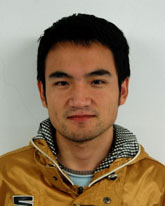
Lyu, JianweiPostdoctoral Research AssociatePh.D., Astronomy & Astrophysics, 2020, University of Arizonahttp://u.arizona.edu/~jianwei/ Areas of Interest: Extragalactic IR astronomy, black hole/galaxy connectionJianwei is working with Prof. George H. Rieke on the IR properties of AGNs and their host galaxies from z=0 to z=6. Specifically, he carries out comparative SED analysis of low-z objects and high-z ones to obtain insights on the AGN dusty environment, uses multi-wavelength and multi-epoch observations to probe the interplay between supermassive black holes and their host galaxies, and develops new tools for galaxy SED decomposition and AGN selection for the upcoming JWST and future IR missions. |
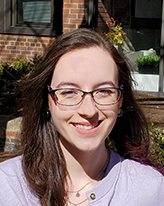
Mansfield, MeganNASA Sagan FellowPh.D. , 2021, University of Chicagohttps://meganmansfield.github.io/ Areas of Interest: Exoplanet Atmospheres, spectroscopy, habitabilityMegan joined Steward Observatory in the fall of 2021 as a NASA Sagan Fellow working with Prof. Daniel Apai. Megan’s research focuses on the spectroscopic characterization of exoplanet atmospheres. She uses a variety of ground-based and space-based observations to study planetary formation, physics, chemistry, and habitability. Megan received her PhD from the University of Chicago in 2021, where she performed spectroscopic observations and modeling of highly irradiated exoplanets, ranging in size from hot terrestrial planets to ultra-hot Jupiters. |
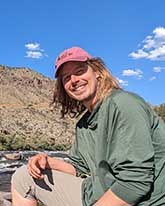
Maschmann, DanielPostdoctoral Research Associate IPh.D., Astrophysics, 2022, Paris ObservatoryDaniel has been a post doc at Steward Observatory since October 2022. Before that, he did his PhD at the Observatory of Paris. His main research focuses are galaxy evolution, star clusters and interstellar dust. He is currently working with Dr Janice Lee on compact star clusters in nearby galaxies, using observations from the Hubble and James Webb Space Telescopes. These observations are a part of the treasury program of the Physics at High Angular Resolution in Nearby Galaxies (PHANGS) collaboration of which Daniel is a member. |
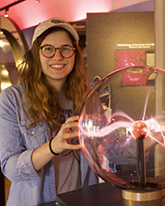
Melso, NicolePostdoctoral Research AssociatePhD, 2021, Columbia UniversityAreas of Interest: CGM/IGM, UV/Optical instrumentation, IFU spectroscopyNicole joined Steward Observatory in January 2022 as a member of the Hamden UV Lab. Her research focuses on mapping the properties of the circumgalactic medium through ultra-low surface brightness spectral imaging. She is particularly interested in the development of Optical/UV instrumentation and is excited to be a part of the Aspera SmallSat Mission. She received her PhD from Columbia University, where she worked on the design and commissioning of the Circumgalactic H-alpha Spectrograph (CHaS), an optical IFU spectrograph for MDM Observatory on Kitt Peak. |
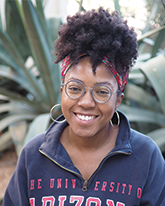
Miles, Brittany51 Pegasi b FellowPh.D., Astronomy & Astrophysics, 2022, University of California, Santa CruzFor Brittany Miles, her work is most meaningful when she collaborates with others to shed light on profound challenges. Brittany’s expertise lies in mid-infrared observations of brown dwarfs—astronomical objects that share properties with both planets and stars. By placing unique constraints on the atmospheric structures of these cold objects, she provides a template for predicting and interpreting future direct images of cooler exoplanets. Her brown dwarf observations inform her work as an instrumentalist, where she retrofits and tests detector capabilities to support more precise characterization of exoplanets. In her fellowship, Brittany will first continue her observations of brown dwarf atmospheres to obtain data on cloud composition and behavior. As co-principal investigator on a James Webb Space Telescope proposal, she will explore the coldest known brown dwarf to inspect possible water clouds and water vapor and infer how such features may behave on gas giant exoplanets. Brittany also plans to enhance the sensitivity of ground-based instruments to capture images of more Earth-like planets. Her work will be instrumental to the field as more large telescopes come online in the years ahead. Brittany earned her Ph.D. in astronomy and astrophysics from the University of California, Santa Cruz, in Summer 2022. |

Parades, Leonardo |
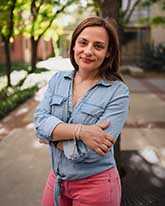
Rodriguez, JimenaPostdoctoral Research Associate IPh.D., Astronomy, 2018, The University of La Plata (Buenos Aires)https://sites.google.com/view/jimerodriguez/homeJimena obtained her PhD in Astronomy in 2018 at The University of La Plata (Buenos Aires, Argentina). After that, between 2018 and 2021, she was a CONICET (Consejo Nacional de Investigaciones Científicas y Técnicas) postdoctoral fellow at The Institute of Astrophysics of La Plata (IALP). In 2021, Jimena began a position as CONICET Assistant Researcher at IALP. Starting in July 2022, she started to work on new JWST data from the Physics at High Angular Resolution in Nearby Galaxies (PHANGS) Treasury program, as a postdoctoral research associate at the University of Arizona, with Dr. Janice Lee. Jimena is focused on understanding the star formation processes and the early life of stars. For this reason, she has specialized in understanding the resolved stellar population in nearby galaxies by studying their young stellar clusters, associations, and different types of young stellar groups and star-forming regions. Currently Jimena is exploiting JWST’s capability to penetrate the dust in star-forming galaxies to identify and study the properties of young star clusters that remain embedded in dust and gas, and in this way be able to decode the earliest stages of star cluster evolution. |
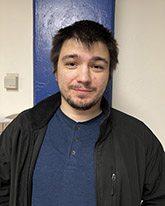
Salcedo, AndresPostdoctoral Research Associate IPh.D. , 2021, The Ohio State Universityhttps://ansalcedo.netlify.app/ Areas of Interest: Cosmology and Large Scale StructureAndres joined Steward Observatory in 2022 after graduating from the Ohio State University with a PhD in Astronomy. Andres' primary research interests include cluster cosmology, cosmology with small-scales, and galaxy and halo assembly bias. Andres works in the Arizona Cosmology Lab on analyzing clustering and weak lensing data from DES and DESI. |
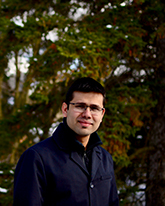
Sarma Bohurah, SuprantaPostdoctoral Research AssociatePh.D., 2020, University of Waterloohttps://supranta.github.io/ Areas of Interest: peculiar velocities, reconstruction of the large-scale structure, Weak Lensing, statistical methods and machine learningSupranta will be joining Steward Observatory in the Fall of 2020 to work in the Arizona Cosmology Lab. He is interested in the data analysis of upcoming cosmological surveys using state-of-art statistical and computational methods. During his PhD, his research involved the study of peculiar velocities of galaxies and forward-modelled reconstruction of the large-scale structure. |
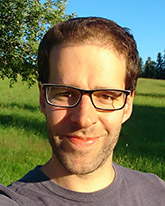
Schlecker, MartinPostdoctoral Research Associate IPhD, 2021, University of Heidelberghttps://matiscke.github.io Areas of Interest: Exoplanets and their demographics, Planet FormationMartin Schlecker's research focuses on exoplanets and their formation, and he has a special interest in exoplanet demographics and planets around cool stars. His tools of choice are planet population synthesis models and statistical analyses of planet populations. He is also involved in programs that search for new exoplanets with the transit and radial velocity techniques. Martin received his PhD from the University of Heidelberg and the Max Planck Institute for Astronomy in 2021 for his work on the architectures of multi-planet systems. In 2022, he joined Prof. Daniel Apai's group at Steward Observatory. |
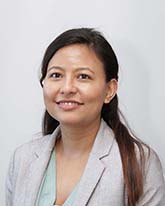
Shrestha, ManishaPostdoctoral Research AssociatePhD, 2018, University of DenverAreas of Interest: Time domain astrophysics, electromagnetic follow-up of gravitational wavesManisha joined Steward Observatory in the fall of 2022 to work with Prof. David Sand. Her research focuses on studies of transients such as gamma-ray bursts, young supernovae, and kilonovae. During her previous postdoctoral position at Astrophysics Research Institute in Liverpool, she used optical observations of gamma-ray bursts to study their magnetic field properties. In addition, she has been working on computational simulations of kilonovae emissions to predict their photometric and polarimetric behavior. She is interested in using these kilonova models to understand better the physics of the electromagnetic counterparts of gravitational wave sources. She received her PhD from the University of Denver in 2018. |

Sun, Fengwu |

Sunayama, Tomomi |
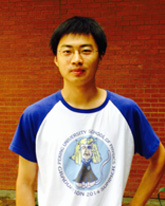
Tang, MengtaoPostdoctoral Research AssociatePh.D., Astronomy & Astrophysics, 2020, University of ArizonaAreas of Interest: Areas of Interest: galaxy formation and evolution, cosmic reionization, high-redshift galaxiesMengtao works with Prof. Daniel Stark on understanding the physical properties of metal-poor star-forming galaxies at high-redshift (z > 1) and their role in cosmic reionization. Using the spectroscopy obtained from HST, MMT, Magellan, LBT, and Keck, his research focuses on investigating the radiation fields, stellar populations, and nebular gas properties of high-redshift star forming galaxies, and constraining their contribution to the reionization of intergalactic hydrogen. He will also be involved in defining applications for future surveys with WFIRST, JWST, and GMT. |
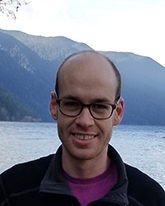
Topping, MichaelAreas of Interest: high-redshift galaxies, Galaxy Formation and Evolution, ISM properties, Large-Scale Structure |
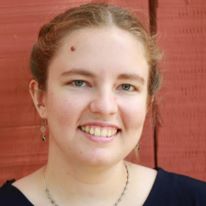
Towner, AllisonAlien Earths Postdoctoral ScholarPhDhttps://apmtowner.wixsite.com/home |
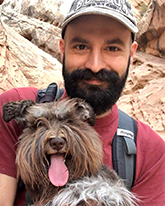
Van Gorkom, KylePostdoctoral Research Associate IPhD, Optical Sciences, 2021, The University of Arizonahttps://kvangorkom.github.io/ Areas of Interest: high contrast imaging, Exoplanets, wavefront sensing and controlKyle joined Steward Observatory in early 2022 to work with Ewan Douglas on the use of wavefront control and high contrast techniques to directly image exoplanets with space-based observatories. During his PhD in Optical Sciences, his research with Jared Males focused on the characterization and modeling of deformable mirrors and focal-plane wavefront sensing for the MagAO-X instrument. He previously worked on the development of metrology techniques for future space missions as an optical engineer at NASA Goddard, and on interferometry and coronagraphy at the Space Telescope Science Institute. |
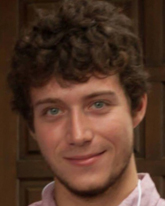
Wagner, KevinNASA Hubble/Sagan FellowPhD, 2020, University of Arizonahttps://astrowagner.wordpress.com/ Areas of Interest: Exoplanets, Circumstellar disks, and Planet formationKevin is using ground-based adaptive optics systems (such as VLT/SPHERE and MagAO) to search for young and forming planetary systems, and to study these archetypes of mature planetary systems through high-contrast imaging and spectroscopy. |
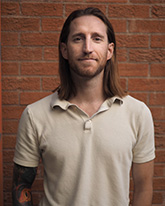
West, Andrew ThomasAreas of Interest: Black Hole Accretion, High Energy Astrophysics, Time domain astrophysics, Computational AstrophysicsAndrew received his PhD from Washington University in St. Louis in Spring 2023 under Prof. Henric Krawczynski. His work focuses on combining large scale numerical simulations of black hole accretion disks with cutting edge raytracing algorithms to reproduce the spectro-polarimetric and time domain behaviors of stellar mass black holes during state transitions and explain the origin of quasiperiodic oscillations. He has also worked extensively on ground control software and flight software for balloon-borne X-ray telescopes. At Steward Observatory, Andrew is working with Prof. Dan Marrone and Astronomer CK Chan on the analysis of VLBI data from the Event Horizon Telescope to probe fundamental questions about the high gravity regime created by supermassive black holes. |
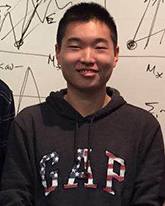
Zhang, HaowenPhD, 2018, Peking UniversityAreas of Interest: Galaxy Formation and Evolution, AGN, Cosmology |

For Public
Public events include our Monday Night Lecture Series, world-reknowned Astronomy Camp and Mt Lemmon Sky Center.

For Students
A good place to start if you want to become an undergrad major or grad student, or need to find our schedule of classes.

For Scientists
Find telescopes and instruments, telescope time applications, staff and mountain contacts, and faculty and staff scientific interests.




